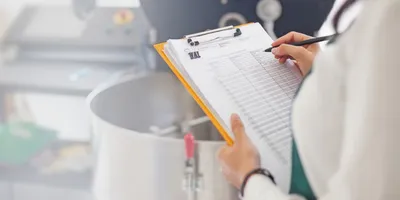Regulatory inspections are critical checkpoints in the pharmaceutical industry. Agencies like the FDA and EMA assess whether a lab's operations comply with Good Manufacturing Practice (GMP), quality standards, and documented procedures. These inspections ensure the integrity of pharmaceutical products and safeguard patient safety.
For quality control (QC) laboratories, preparing for an inspection requires more than just maintaining good science. It demands a robust framework of documentation, training, method validation, and traceability. This article provides a practical roadmap to help labs achieve a state of constant inspection-readiness.
Key Areas of Focus During a Regulatory Inspection
Regulatory authorities examine multiple facets of QC operations. Labs should be prepared to present:
- Method validation and verification documentation: This includes protocols and reports demonstrating that analytical methods produce reliable and reproducible results. For example, a validated HPLC method for assay testing with documented system suitability and precision studies.
- Equipment calibration and maintenance records: Inspectors expect complete logs showing regular calibration and maintenance activities. For instance, calibration certificates for balances, pH meters, or dissolution testers, and scheduled maintenance records for HPLC systems.
- Standard Operating Procedures (SOPs): SOPs should be current, version-controlled, and followed precisely. Examples include SOPs for sample preparation, instrument operation, and handling of out-of-specification results.
- Analyst training and competency evaluations: Training files must show that personnel are qualified to perform assigned tasks. Examples include training logs for new analytical techniques and records of observed performance checks.
- Audit trails and electronic data integrity: Systems must record who accessed or modified data and when. For example, chromatographic software audit trails that log manual integrations or data deletions.
- Logbooks and sample management systems: Logbooks should detail daily activities, including instrument usage and sample handling. Sample management systems must trace each sample from receipt to disposal, such as chain-of-custody forms and sample tracking spreadsheets.
Inspectors often use pharmacopeial standards—such as USP and EP—as reference points. Any deviations from compendial methods must be scientifically justified and documented with robust validation data.
Building an Inspection-Ready Culture in the QC Lab
Inspection readiness should be a continuous process, not a last-minute scramble. Labs can foster this culture by:
- Conducting routine internal audits: Schedule periodic audits to proactively identify gaps. For example, monthly checks of documentation completeness and adherence to SOPs.
- Implementing a comprehensive quality management system (QMS): A QMS integrates processes, responsibilities, and resources to ensure quality objectives are met. Examples include CAPA management tools and deviation tracking systems.
- Maintaining updated and accessible SOPs: Ensure staff can easily retrieve the latest approved versions. This may include a digital SOP repository with access control.
- Regularly training staff on regulatory expectations: Hold annual refresher courses and share recent inspection trends or citations with the team. For example, FDA warning letter case studies.
- Promoting data integrity practices across all functions: Educate staff on ALCOA+ principles and enforce policies for secure login credentials and audit trail reviews.
Management support is crucial. Quality leaders should ensure teams have the time and resources to address gaps, implement CAPAs (Corrective and Preventive Actions), and improve compliance.
Documentation Best Practices for Regulatory Success
Proper documentation can make or break an inspection. Labs should:
- Maintain chronological, complete, and legible records: This includes dated entries in lab notebooks or electronic records, with clear handwriting or system-generated text.
- Use validated electronic systems with audit trails: For example, validated LIMS or CDS platforms that capture user actions and changes in data.
- Track deviations, investigations, and OOS (Out of Specification) events: Maintain a central log of these occurrences with corresponding root cause analyses and CAPAs.
- Version control all SOPs and protocols: Each document should have a version history and change control documentation.
- Ensure traceability from sample receipt to final result: Use barcode systems or manual logs to link samples to analysts, methods, and test results.
Every data point should be attributable, legible, contemporaneous, original, and accurate—commonly known as ALCOA principles.
Training QC Staff for Inspection Readiness
Personnel are often interviewed during inspections. To instill confidence, labs should:
- Provide role-specific GMP and SOP training: New analysts should receive tailored onboarding, including walkthroughs of lab-specific procedures.
- Conduct mock inspection interviews and scenario-based assessments: Simulate inspections with questions such as "What do you do if a sample arrives with no label?"
- Document all training and competency evaluations: Maintain signed training records, tests, and periodic re-qualification assessments.
- Empower staff to answer questions truthfully and confidently: Reinforce that it's acceptable to say "I don’t know, but I can find the answer," rather than guessing.
Training isn’t just a regulatory checkbox—it’s a tool for sustaining quality awareness throughout the organization.
Common Regulatory Inspection Findings and How to Avoid Them
Some of the most frequent issues cited in FDA Form 483s include:
- Inadequate or missing documentation: E.g., undocumented cleaning activities or incomplete batch records.
- Poor data integrity controls: Such as shared login credentials or disabled audit trails on analytical software.
- Lack of method validation: Methods used without formal validation or incomplete validation reports.
- Insufficient training or SOP adherence: Analysts unaware of procedural updates or working from outdated SOPs.
- Failure to follow written procedures: Skipping required steps during sample analysis or deviating from approved methods without justification.
Labs can mitigate these risks through preventive QA reviews, periodic risk assessments, and a culture of continuous improvement.
Making Inspection Readiness a Competitive Advantage
Inspection readiness isn't just about passing audits—it's about fostering operational excellence. By aligning QC operations with GMP, pharmacopeial standards, and global regulatory expectations, pharma labs can reduce compliance risks and build long-term trust with regulators and stakeholders.
An inspection-ready lab is a resilient lab. With strong documentation, competent personnel, and a proactive quality mindset, your lab can confidently navigate any regulatory audit.
Frequently Asked Questions (FAQs)
What documents should be ready for a pharmaceutical regulatory inspection?
Labs should have ready access to SOPs, training records, method validation protocols, calibration logs, audit trails, and deviation reports. These documents support transparency and demonstrate compliance with GMP standards.
How can pharma QC labs maintain inspection readiness year-round?
By fostering a culture of continuous improvement, performing regular internal audits, updating documentation, and ensuring staff are routinely trained on regulatory and GMP requirements.
What is the role of data integrity in regulatory inspections?
Data integrity is central to inspection outcomes. Agencies like the FDA and EMA expect data to be complete, consistent, and accurate. Labs must implement electronic systems with audit trails and adhere to ALCOA+ principles.
How can staff prepare for inspection interviews?
QC personnel should receive training on how to confidently discuss procedures, data, and responsibilities. Mock inspections and Q&A practice sessions are effective ways to prepare staff for real-time interactions with inspectors.












